2022 has been a superbly rich year for contemporary art. Partly because of the pandemic, these past 12 months have seen an enormous number of art events. Some were postponed from previous years, and others were originally scheduled for 2022 and could actually take place, but all in all 2022 was a great year to resume art traveling!
After the Venice Biennale, Documenta, Manifesta, and many other international art events, there is one final destination for this 2022 we need to visit, the Lyon Biennale. And although I still haven’t been there yet, I am planning to go soon, so here is all the information we need to prepare for the trip.
Lyon, a destination for contemporary art and culinary wonders
Let’s start with the city, Lyon. The third-largest city and second-largest metropolitan area of France, Lyon has a long history and a rich culture. According to the historian Dio Cassius, the city was founded in 43 BC as a settlement for Roman refugees, at the convergence of two navigable rivers, Rhône and Saône. It later served as the capital of Gauls, and developed into an important center for merchants and manufacturers during the Middle Ages and Modern times. Nowadays the city is famous for its cuisine and gastronomy, as well as historical and architectural landmarks, and many of its monuments are inscribed on the UNESCO World Heritage List.
The 2022 Lyon Biennale
The Lyon Biennale stems from a project by the Lyon’s Museum of Contemporary Art, directed by Thierry Raspail in 1984. Following the Paris Biennale’s closure in 1985, the Biennale proceeded with an annual event from 1984 – 1988 entitled October of the Arts. This event gave rise to the Lyon Biennale of Contemporary Art in 1991, which was inaugurated by the City of Lyon and the Ministry of Culture within the framework of decentralization, aiming to move the French Biennale of Contemporary Art outside Paris. Since 1991 the Lyon Biennale of Contemporary Art has been financed in equal parts by the City of Lyon and the French Ministry of Culture.
The organizational model of the Lyon Biennale of Contemporary Art is to create events of artistic self-renewal while also building a stable, long-term project, bonding with its host territory.
The 2022 Lyon Biennale, entitled Manifesto of fragility, will be on view until December 31, 2022, and is curated by Sam Bardaouil and Till Fellrath.
This 16th edition was originally planned for 2021, and gathers 202 artists from over 40 countries spread over 12 venues across the city. The Biennale has a record for being not just extremely popular in terms of visitors, but for having an extremely young target audience, and serves as a focal point for the contemporary art discourse in France.
On that note, Manifesto of fragility positions fragility at the heart of a generative form of resistance that is emboldened by the past, responsive to the present and primed for the future. Conceived as a collective statement, authored through word, image, sound, and movement, it calls on a community of resilient voices to draft a manifesto for a world that is blamelessly fragile. The Biennale is structured around three distinct yet inter-connected layers, where fragility and resistance are explored through the lens of the individual, the city, and the world respectively.
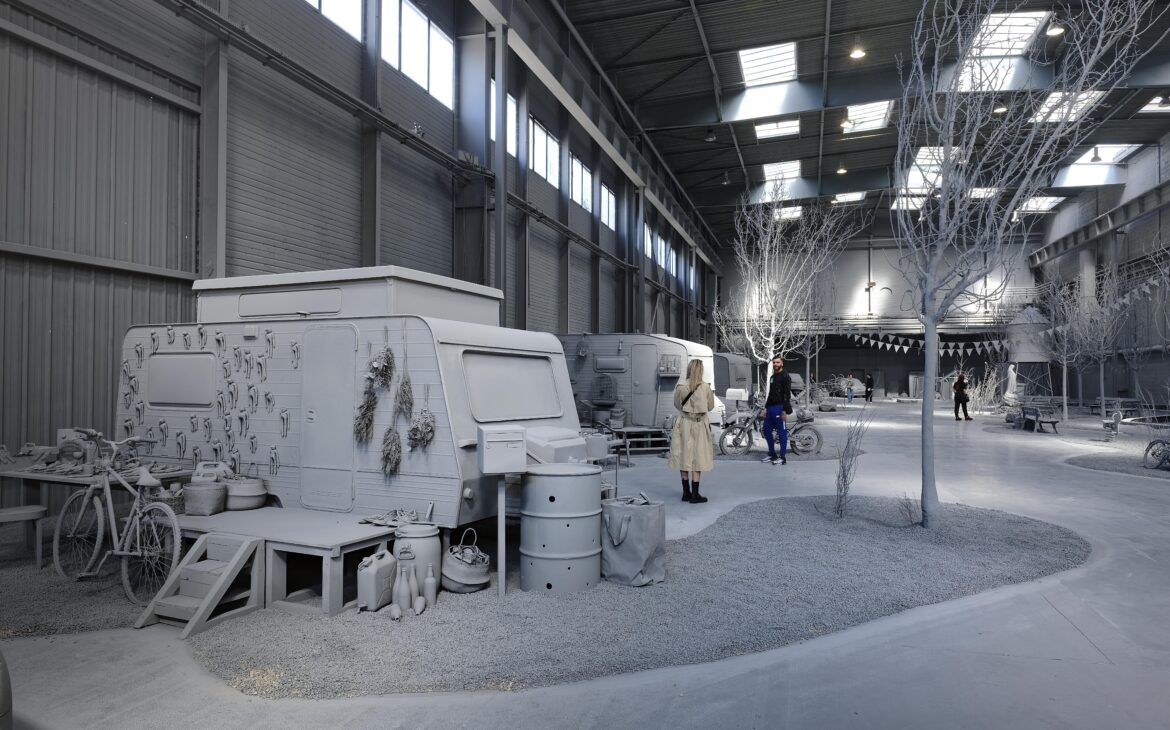
With the support of Galleria Continua, galerie Krinzinger, Collection Wemhöner, Pia Gazil, Carrion Génie Civil Maçonnerie, Mat-Eco Recyclage. © Adagp, Paris, 2022. Photo : Blaise Adilon’
The main exhibitions
There are 12 venues for this year’s Lyon Biennale, and all of them seem to present not just interesting exhibitions, but amazing opportunities to discover and better understand the city’s history. From macLYON to newly reopened spaces, the biennale is a unique chance to visit some incredible venues in Lyon, like the former Fagor Factory of 29.000 sqm in size, and the building of the former Guimet Museum, now open again to the public after 15 years.
Several of the venues are free, or included in the price of the Biennale ticket, giving visitors the freedom to explore the city and pop into any of the exhibitions at their preferred time.
To find your (and my) way around the city, the Lyon Biennale provides a useful booklet, with 4 different routes to follow, and a map to visualize all the different locations around the city. Here are the venues I look forward to visiting the most:
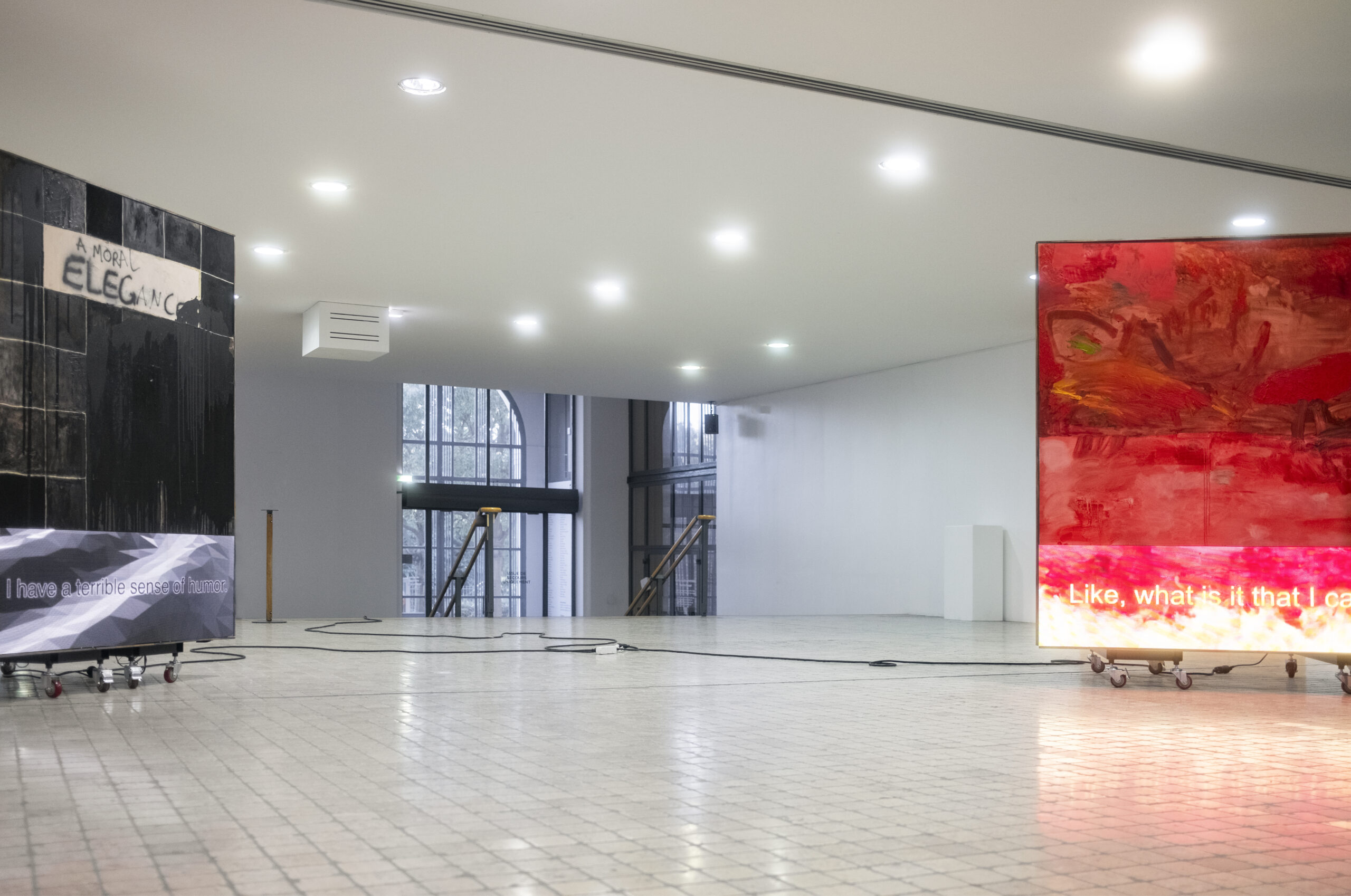
Courtesy of the artist Layr, Vienne. With the support of Phileas Fund of Contemporary Art, Chancellerie fédérale de la République d’Autriche, Forum Culturel Autrichien de Paris, de Layr. 16th Lyon Biennale, macLYON © Philipp Timischl
macLYON
Designed by Renzo Piano, this large architectural ensemble stands between the Rhône river and the Parc de la Tête d’Or, on the historic festival site of the Foire de Lyon. This is the central venue for the biennale, as the museum hosts not only part of the artists directly linked to the biennale itself but also two other collateral exhibitions.
The many lives and deaths of Louise Brunet, on view on the 3rd floor at the macLYON, is a fictionalized retelling of the obscure life of Louise Brunet, a young woman who was sent to prison for her role in the 1834 revolt of the Lyon silk weavers, only to find herself a few years later on a perilous journey from Lyon to the silk factories of Mount Lebanon.
Beirut and the Golden Sixties, on view on the 1st and 2nd floors at the macLYON, highlights collisions between art and political ideologies during a romanticized era of global influence in Beirut – the city where Louise Brunet landed around a century earlier, beginning with the 1958 Lebanon crisis and ending with the 1975 outbreak of the Lebanese Civil War.
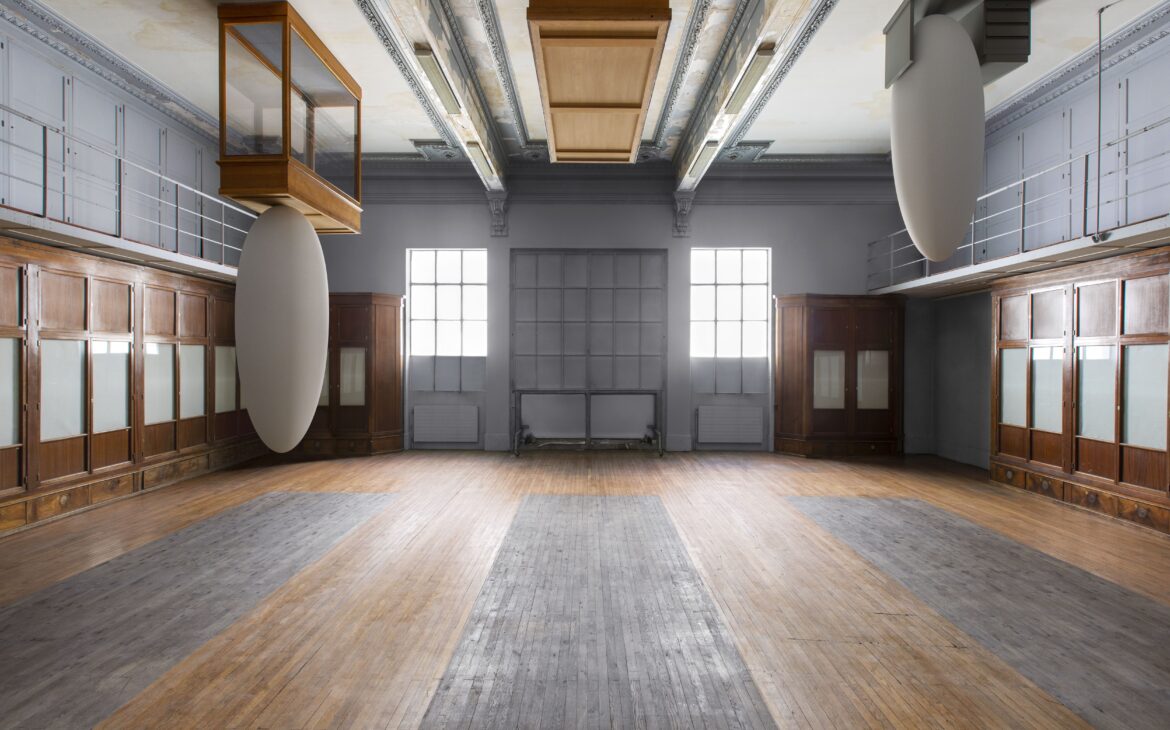
Musée Guimet, 16th Lyon Biennale © Vinciane Lebrun/Voyez-Vous
Musée Guimet
The Musée Guimet was founded by Émile Guimet – an industrialist, chemist, philanthropist, and amateur expert on the history of religions – on his return from a journey to the Far East. Opened in 1879, the building by architect Jules Chatron showcased Guimet’s personal art collection and housed a library together with a research and teaching institute. The building closed permanently in 2007 and remains unoccupied. The periods of prosperity and decline of this museum and its abandoned building embody cycles of fragility and resistance that echo the central themes of the 16th Lyon Biennale. The museum hosts part of the artists of the biennale, whose works interact with the abandoned museum.
Jardin du Musée des Beaux-Arts
Lyon’s Musée des Beaux-Arts stands on the site of the Abbaye des Dames de Saint-Pierre, founded here in the 10th century. The present buildings date from the 17th century. The garden occupies the old monastic cloister and was remodeled several times over the course of the 19th century, since when it has been a setting for numerous works of art, from copies of celebrated Antique works to pieces by Rodin and Bourdelle, and contemporary installations such as Claudio Parmiggiano’s Terra, buried here in 1989. From an enclosed nunnery to a place where once inaccessible treasures became available to the public, the diverse functions of this location are reflective of various objectives. It is in itself a work of art.
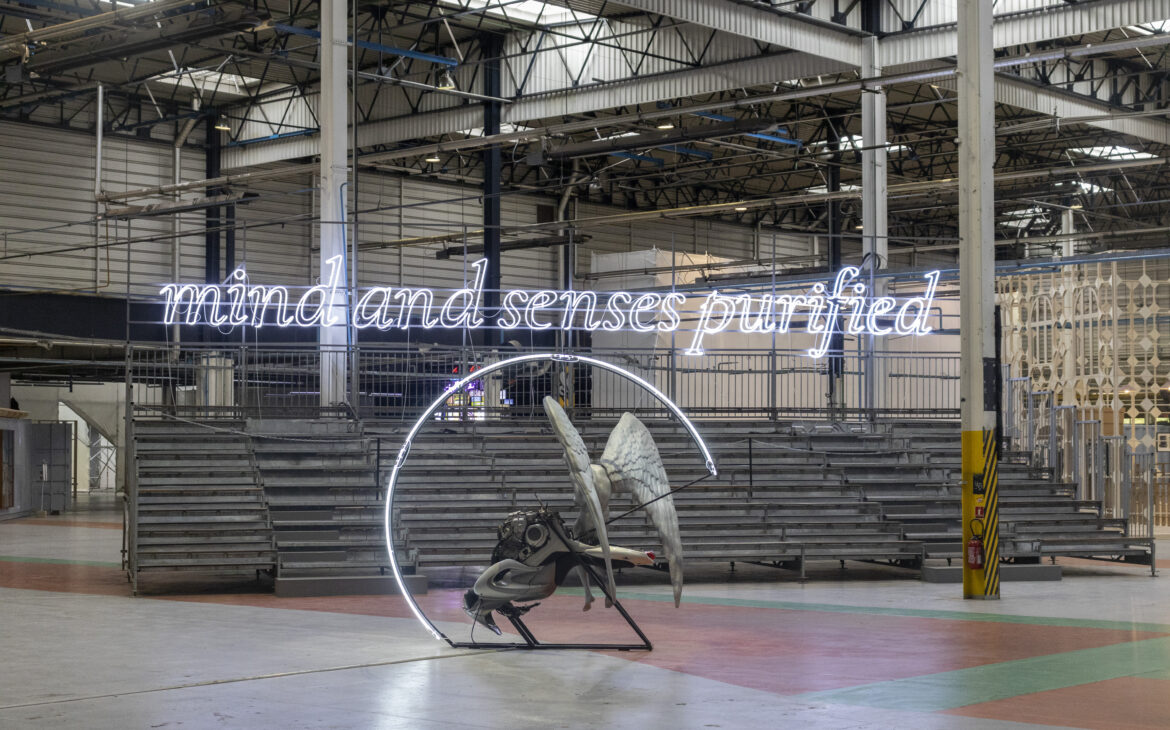
16th Lyon Biennale, Usines Fagor. Courtesy the artist, with the support of Gros
Usines Fagor
Once the pride of Lyon’s industrial history, the Fagor factories closed in 2015 and have been reconverted in recent years. The main exhibition venue for this 16th edition of the Biennial of Contemporary Art, this 29,000 m2 site is the primary destination for all art lovers in Lyon. Here you will find all the artists featured in the Biennale, with massive installations, videos, and all sorts of wonders. The exhibition is spread over 7 different halls, so plan ahead and reserve some time for the visit.
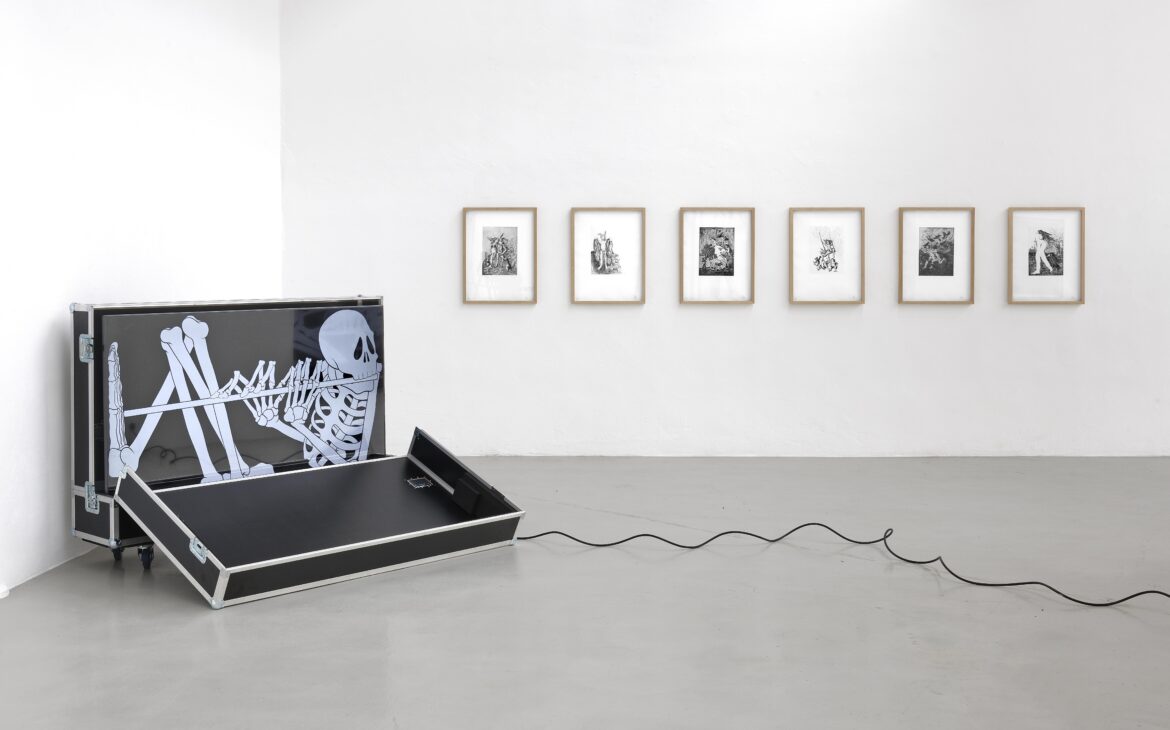
16th Lyon Biennale, URDLA. Courtesy the artists © Blaise Adilon
URDLA
Founded in 1978 by the Surrealist-inspired painter Max Schoendorff, URDLA was first housed in a lithography printshop threatened with demolition, with the aim of preserving the building and its associated artisan skills. In 1986, the not-for-profit association moved to a former tulle mill. The hybrid space – a workshop, gallery, and publishing house – conserves and teaches traditional print-making skills, with a parallel focus on contemporary techniques and production. URDLA is hosting several guest artists for the 16th Lyon Biennale 2022. A place of learning and exchange centered around a specific art form, URDLA is home to a fragile act of creation that is at once ephemeral and lasting.
Curious about visiting the Lyon Biennale?
You can find all the useful information, tickets, and opening hours on this page.

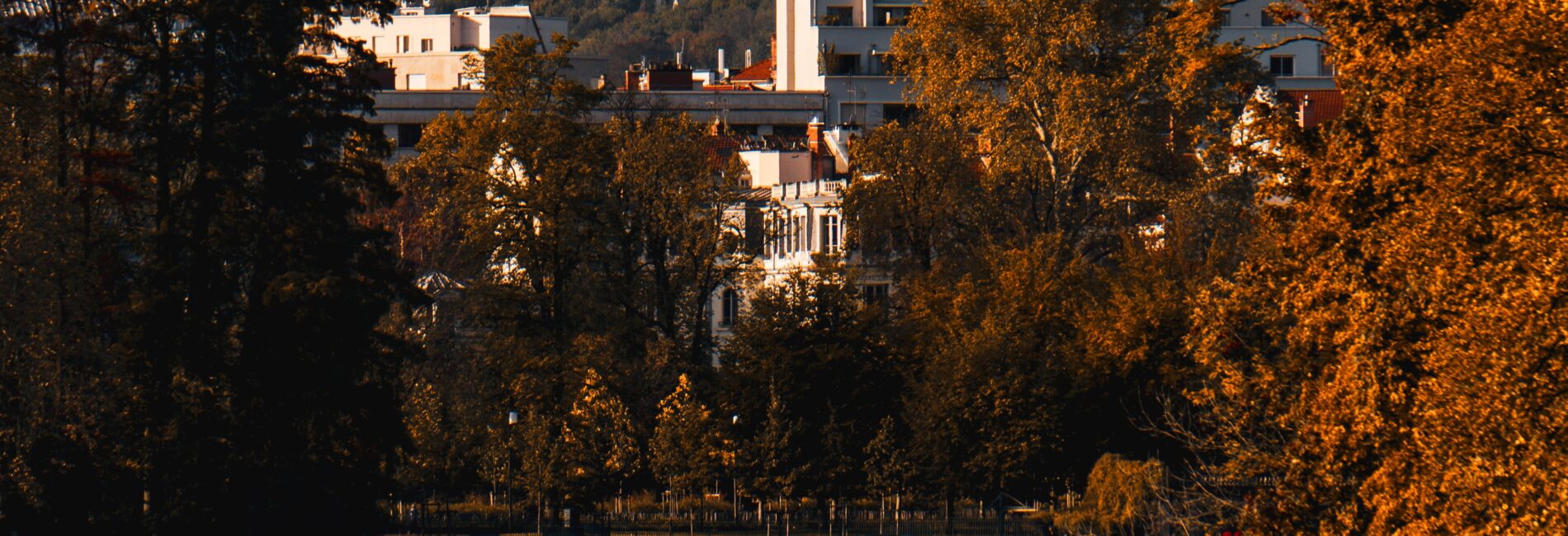


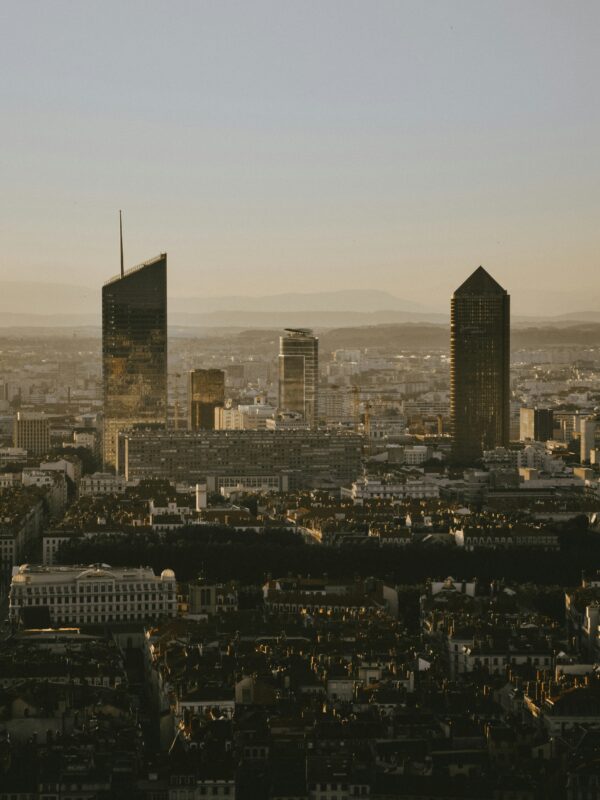
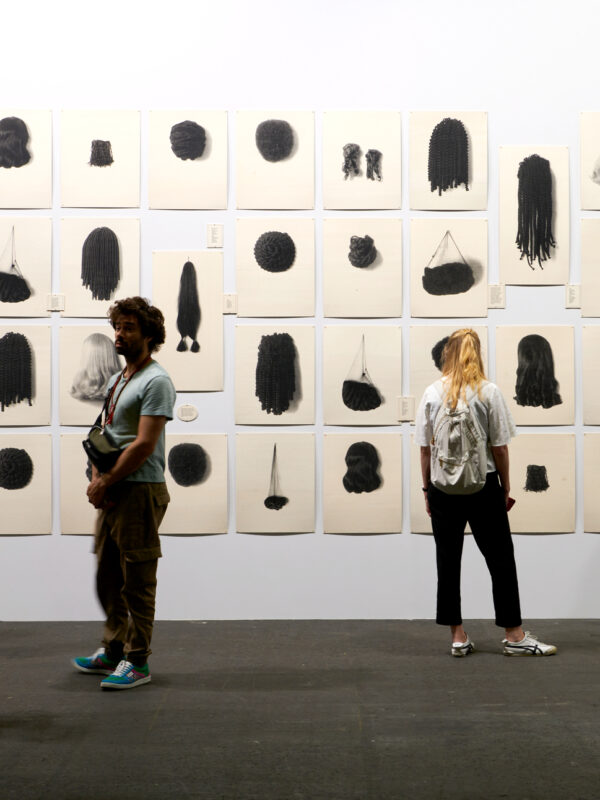
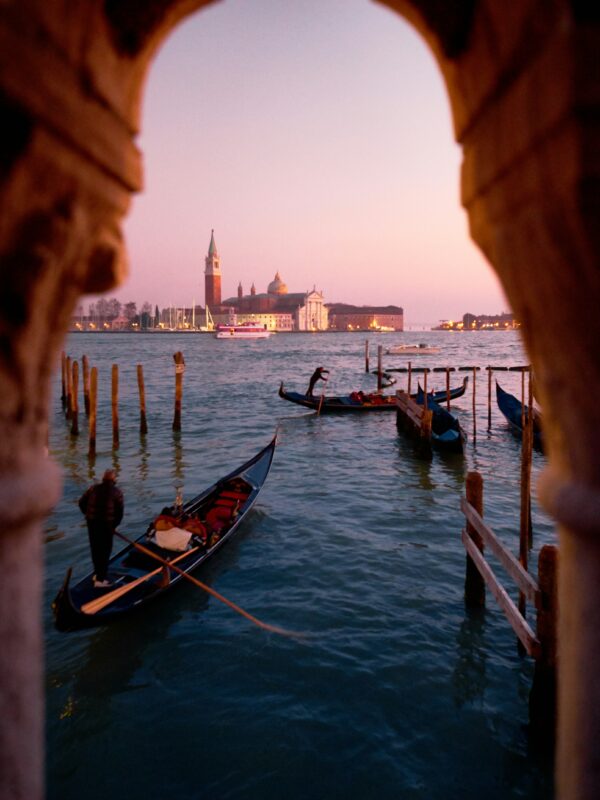




Get in touch